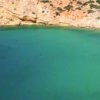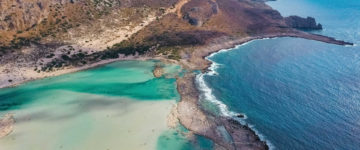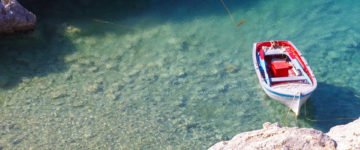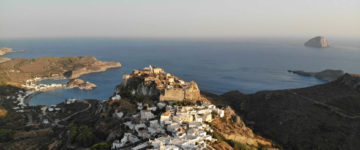
Tilos is an island in Greece which exists for those who are looking for a green adventure. With mountains turning russet gold in the afternoon, and fishing boats bobbing in Livadia’s pretty harbour. Unlike some of its barren neighbours, the island is a bloom with a variety of vivid wildflowers and home to a beguiling biodiversity, which attracts birdwatchers and wildlife buffs from across the globe.
If you’re a nature lover, there are miles of trails through meadows, mountains and green valleys to work up a sweat before flopping onto one of many deserted beaches. The azure waters here also play host to monk seals and sea turtles. Several small Knight’s castles studding the crags and some of the inconspicuous often frescoed medieval chapels may attract you for a little time in between your relaxation.
The bones of mastodons (midget elephants that became extinct around 4600 BC) were found in a cave here in 1974. It’s believed that over 6 million years ago the island was attached to Asia Minor and when the disconnection occurred the elephants, with no natural predators, no longer had to be so large and shrunk in size.
Picture perfect Livadia is low-key, whitewashed and inviting. Livadias port is the first thing you’ll see of the island and welcomes a cosmo cast of artists, yachties and earthy locals. It’s a great base from which you can explore the island, or simply relax on its beach, a 2 kilometres arc of red, volcanic sand. You might not believe it, but somnolent Livadia is actually the main pulse of the island.
Mikro Horio, the arcaeological site of Tilos, not far from Livadia was built inland as protection from pirates. The last inhabitants left in the 1960s, mainly due to water scarcity. Wandering around is fascinating and if you’re here as the light fades, faintly eerie with houses in various states of abandonment.
Megalo Horio which is the tiny capital of Tilos, hugs the hillside with narrow streets teeming with battlescarred cats and sun-blasted cubic houses. The little museum on the main street has mastodon bones.
Tilos belongs to the Dodecanese group of Islands, lies in the Aegean Sea and the specific geographic coordinates are 36°25’22.7″N 27°22’23.8″E. Tilos island located about 27 miles west of Symi island and about 60 miles north of Karpathos. The population of the island after the most recent census is 800 inhabitants, most of whom come only in summer.







